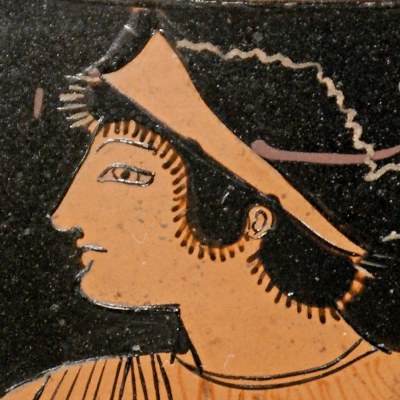|
Tuluŋigraq
In the form of Inuit mythology in vogue among the Iñupiaq Eskimo of north-western Alaska, Tuluŋigraq was a god createdAsatchaq 1992, p. 6 by the primordial ''aana'' (or "grandmother") goddess. (cf. the god Tulugaak of the eastern Eskimo) *When the world was in perpetual darkness of night, he stole the skin-wrapped sun, and with his beak released it from the skin: it flew upward, creating daylight. *By wrestling her, Tuluŋigraq had acquired as wife an ''uiḷuaqtaq'', a 'woman who had refused to marry'. (With this theme, Lowenstein compared the shamanic experience wherein "the shaman wrestles with" the goddess Nuliajuk Nuliajuk is a goddess of the Netsilik Inuit. According to Rasmussen Nuliajuk lives on the bottom of the sea and controls sea mammals (seals, walruses, and sea lions). Whenever humans neglect to observe ritual prohibitions, she imprisons the sea-m ..., as recorded by Rasmussen (1930) for the Iglulik.) Thetis of Hellenic myth was acquired as wife by the mortal h ... [...More Info...] [...Related Items...] OR: [Wikipedia] [Google] [Baidu] |
Tulugaak
In Inuit mythology, Tulugaak was the creator of light Light or visible light is electromagnetic radiation that can be perceived by the human eye. Visible light is usually defined as having wavelengths in the range of 400–700 nanometres (nm), corresponding to frequencies of 750–420 tera .... The meaning of tulugaq is 'raven'; cf. the god Tuluŋigraq ("something like a raven"Lowenstein 1992, p. 10.). Sometimes related to other sky gods, like Torngarsuk and Anguta from Inuit pantheon. Notes References * Inuit gods Legendary crows Light gods Sky and weather gods {{NorthAm-myth-stub ... [...More Info...] [...Related Items...] OR: [Wikipedia] [Google] [Baidu] |
Inuit Mythology
Inuit religion is the shared spiritual beliefs and practices of the Inuit, an indigenous people from Alaska, northern Canada, parts of Siberia and Greenland. Their religion shares many similarities with some Alaska Native religions. Traditional Inuit religious practices include animism and shamanism, in which spiritual healers mediate with spirits. Today many Inuit follow Christianity, but traditional Inuit spirituality continues as part of a living, oral tradition and part of contemporary Inuit society. Inuit who balance indigenous and Christian theology practice religious syncretism. Inuit cosmology provides a narrative about the world and the place of people within it. Rachel Qitsualik-Tinsley writes: Traditional stories, rituals, and taboos of the Inuit are often precautions against dangers posed by their harsh Arctic environment. Knud Rasmussen asked his guide and friend Aua, an '' angakkuq'' (spiritual healer), about Inuit religious beliefs among the Iglulingmiut (peopl ... [...More Info...] [...Related Items...] OR: [Wikipedia] [Google] [Baidu] |
Nuliajuk
Nuliajuk is a goddess of the Netsilik Inuit. According to Rasmussen Nuliajuk lives on the bottom of the sea and controls sea mammals (seals, walruses, and sea lions). Whenever humans neglect to observe ritual prohibitions, she imprisons the sea-mammals within the drip-basin under her lamp (making them unavailable to hunters), so that shamans must conjure her so as to release them. Nuliajuk is co-wife with Isarraitaitsoq; their husband is the scorpionfish god Kanajuk.Christopher, 2007, p. 38 They have an adopted baby, which they stole "from a sleeping mother when her husband was out hunting at the breathing holes". Stories Here is one of the stories of Nuliajuk from the Kivalliq Region. ;Nuliajuk (see also Sedna) Nuliajuk lives in the ocean for a very long time. Nuliajuk just sits on the ocean floor, her long hair flowing, moving back and forth with the tides and the currents. When you look down into the sea over the side of a boat in summer, you can see her hair, swaying back a ... [...More Info...] [...Related Items...] OR: [Wikipedia] [Google] [Baidu] |
Thetis
Thetis (; grc-gre, Θέτις ), is a figure from Greek mythology with varying mythological roles. She mainly appears as a sea nymph, a goddess of water, or one of the 50 Nereids, daughters of the ancient sea god Nereus. When described as a Nereid in Classical myths, Thetis was the daughter of Nereus and Doris, and a granddaughter of Tethys with whom she sometimes shares characteristics. Often she seems to lead the Nereids as they attend to her tasks. Sometimes she also is identified with Metis. Some sources argue that she was one of the earliest of deities worshipped in Archaic Greece, the oral traditions and records of which are lost. Only one written record, a fragment, exists attesting to her worship and an early Alcman hymn exists that identifies Thetis as the creator of the universe. Worship of Thetis as the goddess is documented to have persisted in some regions by historical writers such as Pausanias. In the Trojan War cycle of myth, the wedding of Thetis and th ... [...More Info...] [...Related Items...] OR: [Wikipedia] [Google] [Baidu] |
Peleus
In Greek mythology, Peleus (; Ancient Greek: Πηλεύς ''Pēleus'') was a hero, king of Phthia, husband of Thetis and the father of their son Achilles. This myth was already known to the hearers of Homer in the late 8th century BC. Biography Peleus was the son of Aeacus, king of the island of Aegina, and Endeïs, the oread of Mount Pelion in Thessaly. He married the sea-nymph Thetis with whom he fathered Achilles. Peleus and his brother Telamon were friends of Heracles, and served in Heracles' expedition against the Amazons, his war against King Laomedon, and his quest for the Golden Fleece alongside Jason and the Argonauts. Though there were no further kings in Aegina, the kings of Epirus claimed descent from Peleus in the historic period. Mythology Peleus and his brother Telamon killed their half-brother Phocus, perhaps in a hunting accident and certainly in an unthinking moment, and fled Aegina to escape punishment. In Phthia, Peleus was purified by the city's ruler, E ... [...More Info...] [...Related Items...] OR: [Wikipedia] [Google] [Baidu] |

